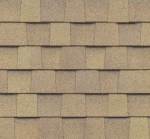Cool Roofs and Title 24
Cool roofs are now a prescriptive requirement for both low-slope and steep-slope roof applications on residential buildings. The Title 24 standards do not require a cool roof on a residence when energy compliance is achieved using the performance method.
Roofing products with high solar reflectance and thermal emittance are referred to as “cool roof”, which is the outer layer or exterior surface of a roof. As the term implies, the temperature of a
cool roof is lower on hot sunny days than a conventional roof, reducing cooling loads and the energy required to provide air conditioning. Optional compliance credit may be taken when a cool roof is
installed using the performance approach. The credit is available only if there is no radiant barrier installed.
The benefit of a high reflectance roof surface is obvious. While dark surfaces absorb the sun’s energy (visible light, invisible infrared, and ultraviolet radiation) and become hot, light-colored surfaces reflect solar energy and stay cooler. High emittance is also important. Emittance refers to the ability of heat to escape from a surface once it is absorbed. Surfaces with low emittance (usually shiny metallic surfaces) contribute to the transmission of heat into the roof components under the roof surface. Because of this increase of heat, the building’s air conditioning load will increase resulting in higher energy usage and less comfort for the occupants. High-emitting roof surfaces give off absorbed heat relatively quickly through the path of least resistance which is upward and out of the building.
To be considered a cool roof, roofing products used for compliance with the Title 24 standards are required to be tested and labeled by the Cool Roof Rating Council (CRRC). Liquid applied products must also meet minimum standards for performance and durability. The CRRC is the supervisory entity responsible for certifying cool roof products. The roofing products manufacturer must have its roofing product tested for solar reflectance and thermal emittance, be listed in the CRRC’s Rated Product Directory, and be labeled according to CRRC procedures.
(Excerpted from the CEC Title 24 Residential Compliance Manual)

